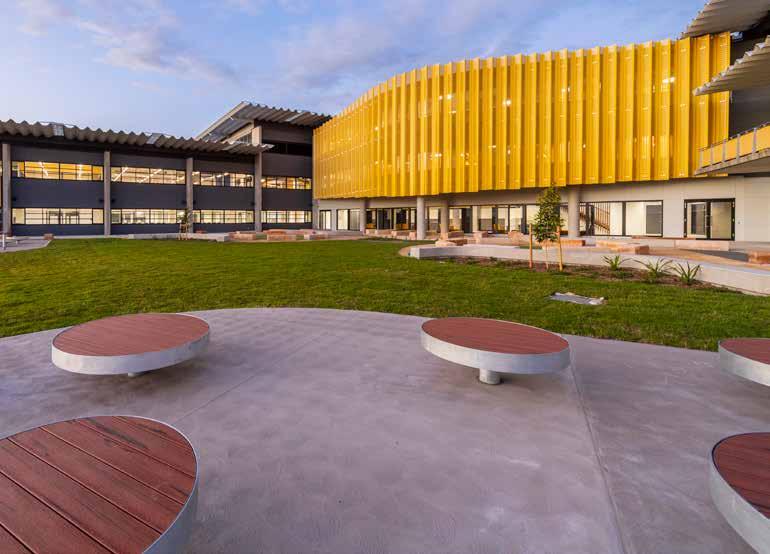
1 minute read
2.6 Sustainable Design
2.6 Sustainable Design
The Diocese is firmly committed to embedding sustainability in its large infrastructure projects. Throughout the lifecycle of a project, sustainability is a key focus, particularly in constructing and operating energy, water, and waste efficient buildings that proactively contribute to a low carbon future.
Laudato Si’ Goal Alignment
Response to the Cry of the Earth Adoption of Simple Lifestyles Ecological Economics
UN Sustainable Development Goals Alignment
SDG 9 Industry, Innovation, and Infrastructure SDG 11 Sustainable Cities and Communities SDG 12 Responsible Consumption and Production SDG 17 Partnership for the Goals
Measurable Targets
• Achieve six-star Green Star ‘Design & As Built’ for all new developments from 1 January 2022.
Priority Actions
Sustainable Design Brief to be implemented in all new property developments as well as minor and major refurbishments projects
All new property developments to be designed and operated utilising electricity as its energy source to align with the Diocese’s direction to transition away from fossil fuels and procure 100% renewable electricity
Achieve a six-star Green Star rating for all new property development projects
Accountability Timeframe
Head of Property Services From 1 January 2022
Head of Property Services By 1 January 2025
Head of Property Services From 1 January 2022
Steps towards sustainability – Catherine McAuley Catholic College, Medowie
The development of a purposebuilt College in Medowie provided an opportunity for the Diocese to create ecologically sustainable development outcomes, whilst also linking the site’s natural environment to students’ education.
Catherine McAuley Catholic College is located on a greenfield site, selected due to its proximity to large-lot housing sub-divisions home to many young families requiring access to education facilities. College buildings are situated on previously cleared sections of the site, leaving a buffer to the ecologically significant portions of land while also providing the bushfire asset protection zones (APZ).
The College’s surroundings include a koala habitat, wetlands, and endangered ecological communities. The College has been designed to inspire future generations to be stewards of the environment. The site layout ensures clear sightlines from the buildings to the surrounding environment, with a vision to engage learners and educators in the local ecosystem.











